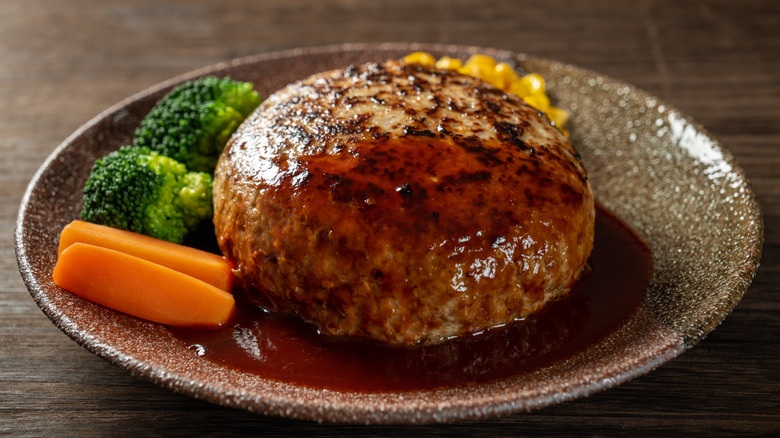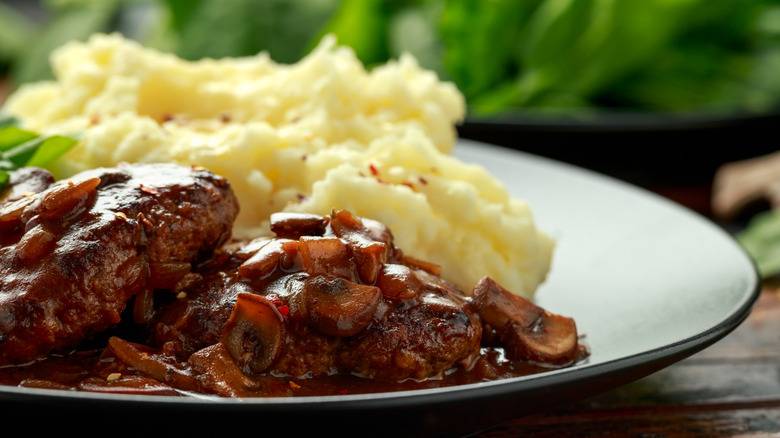The USDA's Standards For Salisbury Steak Are Quite Specific
When is a Salisbury steak a Salisbury steak? When it meets the government's strict set of criteria. Many people take a snide stance when it comes to the insistence that Champagne can only be grown in the Champagne region and anything else is simply sparkling white wine. However, the American government takes a keen interest in the makeup of certain food products.
As the FDA explains on their website, Standards of Identity prescribe certain ingredients or methods of production for certain items. These aren't set in stone, however. For example, the FDA revoked the standard of identity of French dressing in January. The reason for this was that the market definition of French dressing evolved to the point that the FDA's definition of French dressing was outdated. Specifically, the public decided that French dressing had to be pinkish and sweet, even though French dressing technically needn't be either (per Federal Register). Its most basic strictures were that it could not have mineral oil, but still be made with 35% vegetable oil, vinegar or lemon juice, and a seasoning ingredient. In other words, French dressing just had to be a vinaigrette.
However, Salisbury steak operates under a stricter set of rules. Specifically, there seven requirements for any product that one wishes to sell as a Salisbury steak.
Salisbury steak vs. sparkling meat product
An archived version of the USDA's food product labeling book lists the various attributes one needs in order to call a lump of meat a Salisbury steak.
While a Salisbury steak does not need to come from Salisbury, it does need to contain at least 60% meat and limit its fat content to 30%. Its meat content may include 25% pork, though the rest has to be beef, or up to 12% chopped and defatted pork and beef. Extenders like soy, cereal, and bread crumbs may be used up to 12%. No meat byproducts like ears are permitted, except for beef heart. Liquids can be used, including water, skim milk, milk, broth, and cream. The final product must be cooked and unbreaded. Anything that fails that may be called "Patties for Salisbury."
It is a very strict set of rules. Moreover, unlike French dressing, they are unlikely to be repealed anytime soon. While in the case of French dressing people decided the product's name referred to a more specific set of parameters than the FDA originally encoded, Salisbury steak is such a specific product that there can be no misunderstanding about what we are talking about.

